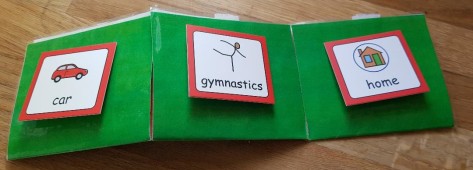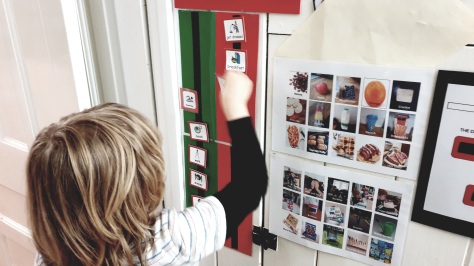We stand in a large room, the Christmas tunes are ringing out of a speaker in the corner. Rhys was happy to enter the building, and seems calm, but still clutches his ears with his hands, slightly anxious.
Santa visits are never on the agenda for our little boy. The lights and loud jingles, followed by a stranger in a bright suit, are not a recipe of joy for my little boy – a perfect sensory overload disaster! Previous attempts have seen complete abandonment, with tears and screaming due to it all being too much. Other children waiting excitedly in line, while I hold back the tears and dodge kicks and slaps from my son who is terrified of the complexity of the experience. An experience that every other child looks forward to, is something we have left off the past Christmas to-do lists.
But for some reason, here we are. Waiting our turn to see the big fat man. We are giving it another go.
If Rhys doesn’t want to, that is ok. We have learnt over the years to try new things and have realistic expectations of them not coming to fruition.
“Come on through, please” says the kind blonde haired lady, and I follow my husband as I hold Rhys’ hand.
The room is quiet and calm, with lights flickering in the corners. A massive fireplace is in the centre of the wall and the jolly, cookie loving chap is waiting for us in his chair.
“Ho, ho, ho. Hello Rhys” he says, as we notice some chairs placed socially distanced, two meters away from Santa.
As two of my children take their seats, smiling at the guy who is going to make all their dreams come true, my little Rhys shuttle runs back and forward across the room.
“Hello, Rhys” says Santa, from his seat by the fire.
Rhys stops and looks up through the bushy man’s beard. “Head, shoulders, knees and toes” he shouts, immediately commencing with the song by touching his head with his two hands.

Santa stands up, and Rhys grabs both his hands, lifting them upwards towards Santa’s head, prompting him to join in with the song. The sight is comical, Santa singing and copying the actions of my son, a sight so special to a family who does not do Santa. As the song comes to an end, Rhys then starts to spring around the little room, jumping forward with both feet in a sort of bunny hop.
“Ho ho, I can jump too!” says Santa, and as I stand on the side, I watch a full grown man with his belly full of jelly, mimic my little boy. My other two children join in, and it doesn’t take long before all six of us are bouncing around the room in a scenario no one has ever seen presented on any Christmas card!
Today demonstrated to me that it is people who make the difference. Rhys didn’t need Santa or fancy lights or presents. He just wanted someone to join him in his jumping and songs.
And today that person was Santa 🎅
Thank you to Caerphilly Miners Centre for the Community for hosting the big jolly chap. You have not only made one little boy’s Christmas, but you have made a mum’s Christmas magical too. Because there are no words to describe seeing my son interact with Santa in his very own way, but even better to have Santa so naturally interact back.
🎅🎅🎅🎅🎅🎅🎅🎅🎅🎅🎅
…and Santa, there will be a beer and mince pie waiting for you in a couple of weeks time.









